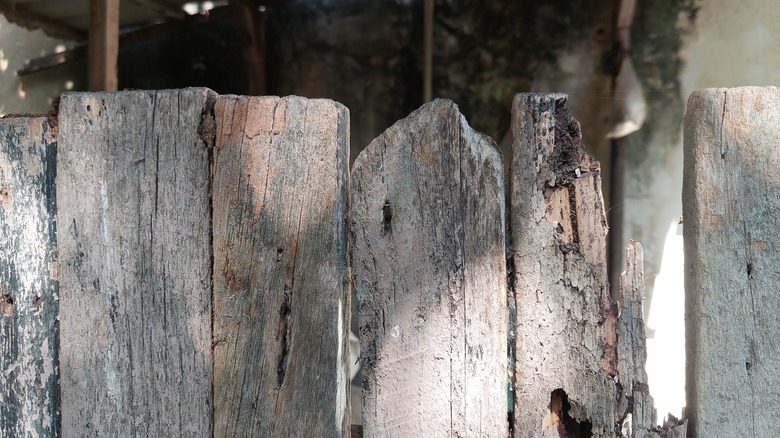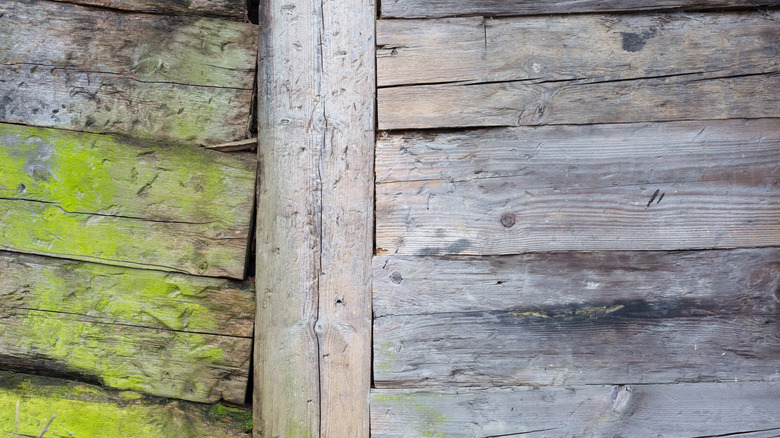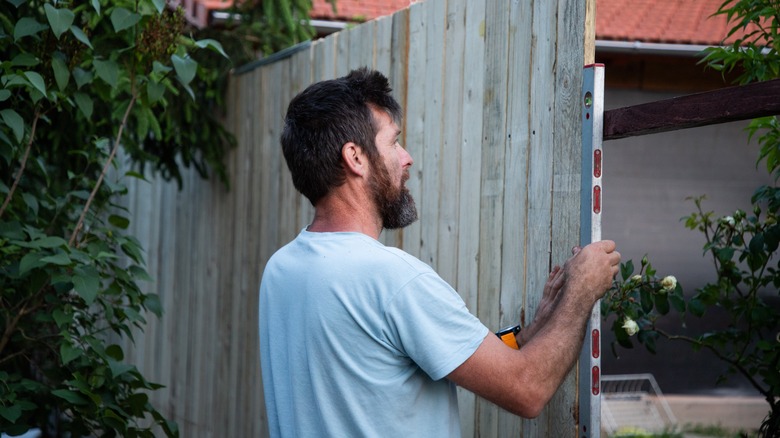How To Easily Tell If Your Wooden Fence Is Rotting (And What To Do About It)
When choosing the right backyard fencing material, wood is a popular option as it look more natural and warm compared to vinyl or chain link. But, like all things exposed to the elements, they don't last forever. Even with proper care, wood is susceptible to rot, which slowly weakens its strength and appearance. Some signs of rot include noticeable sagging, cracking, or collapsing. If left untreated, a rotting wood fence can lead to larger structural issues, compromising both its function and curb appeal.
Understanding why rot occurs, how to spot it early, and what steps you can take to address it will help you keep your wooden fence looking its best for longer. Two main types of wood rot affect wooden fences: dry rot and wet rot. Each behaves a little differently, though both can cause considerable damage. Wet rot happens when moisture consistently seeps into the wood, breaking down its fibers. Combine that with certain types of fungi, and this moisture creates the perfect environment for rot to develop and spread.
Dry rot is a result of direct sun exposure and dry conditions, while wet rot requires constant, heavy moisture to grow. You'll typically find it in places where water pools or the wood stays wet for long periods, such as the base of fence posts or where panels meet. Wet rot creates a spongy texture, making the wood soft and often darker in color. While these two kinds of rot are very different in appearance, they both deteriorate the wood's integrity over time.
Signs your fence is rotting
Identifying, fixing, and preventing wood rot isn't too difficult if you know what to watch for, but catching it early can save you a lot of hassle (and money) down the line. Start by inspecting areas where moisture is likely to build up, such as the bottom of the fence posts, any part in direct contact with the ground, or spots shaded by trees or plants that block sunlight.
One of the telltale signs of rot is the softening of the wood. When you press on the surface, healthy wood will feel firm, but rotting wood will feel softer and may even sink under pressure. This softness is typically accompanied by a musty or damp smell that indicates the growth of fungus. Dark patches or discoloration are also common signs of rot, especially in areas frequently exposed to water. These patches can be brown, black, or even greenish, depending on the type of rot and fungus involved.
Another visual sign to look out for is cracking or flaking. As rot spreads, it weakens the wood's fibers, causing the surface to crack or peel away, sometimes in large chunks. Fungal growth, such as white or grayish threads, might appear along the rotting sections as well. This fungal "fluff" can be a clear indicator that the rot is actively spreading and should be addressed as soon as possible. If you notice mushrooms at the base of your fence, then you likely have more advanced rot.
What to do about rot on your fence
Unfortunately, once rot has set in, there is no real way to reverse it. While some products claim to "stop" or "repair" rot, they are usually temporary solutions that don't fully restore the wood's original strength. The best course of action when dealing with rot is to replace the affected areas with fresh, treated wood. For minor rot, you might be able to replace just a single panel or a small section of the fence. However, if the rot has spread extensively, it's necessary to replace the entire section or even the whole fence.
When replacing any part of your fence, it's important to use rot-resistant wood. Cedar and redwood, for instance, are naturally more resistant to rot than other types of wood. You may also consider sealing or staining your wood fence to create a moisture barrier, which can help extend the life of your wood in humid areas. Additionally, avoid letting plants or soil rest directly against the wood, as this can create pockets of moisture that accelerate rot.
If replacing your wooden fence sounds daunting, look at it as an opportunity to invest in the future of your yard. A properly maintained wooden fence can last for many years, providing the security, privacy, and aesthetic appeal you need without worrying about rot. Regularly inspecting your fence and understanding the signs of rot will allow you to take quick action, keeping your fence sturdy and beautiful for seasons to come.


